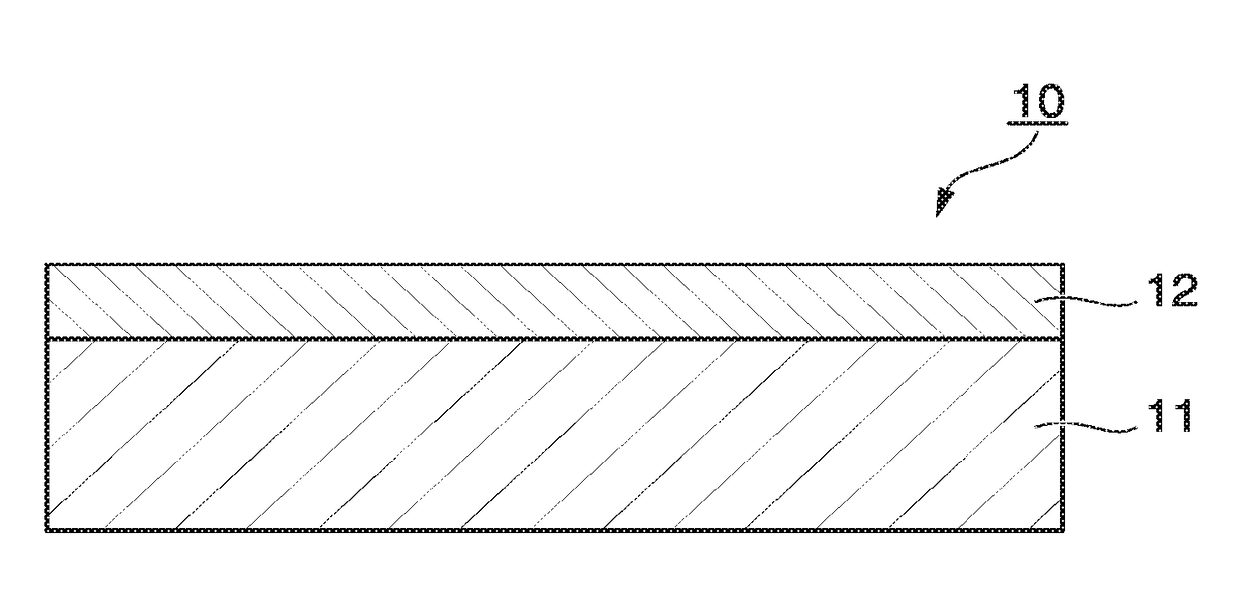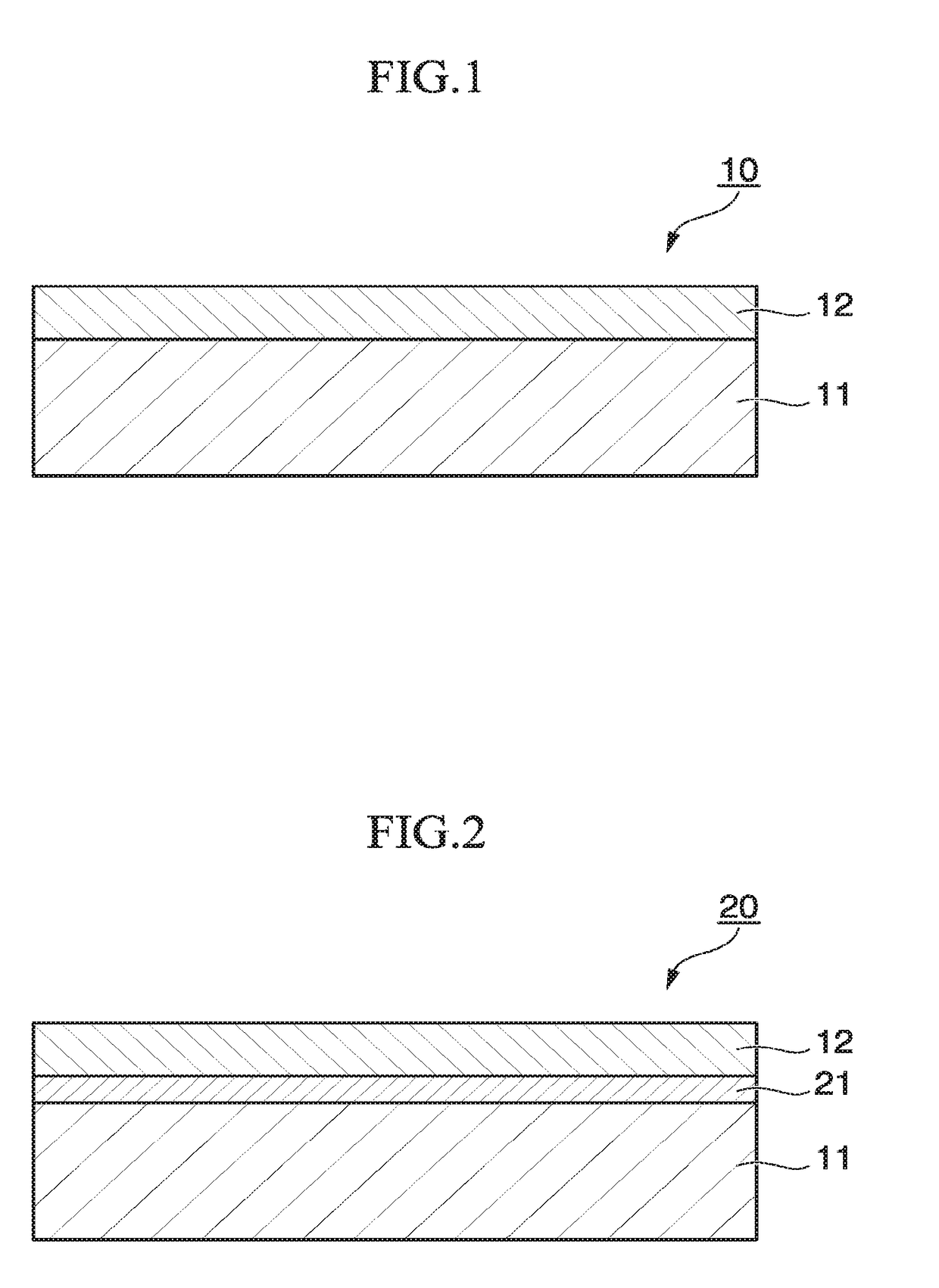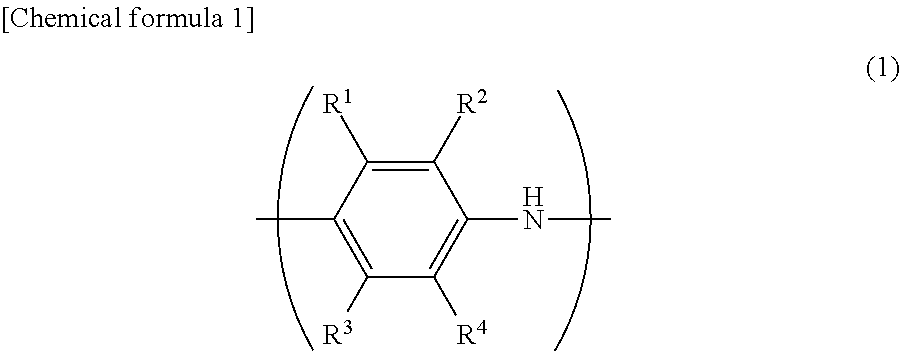Conductor, conductive composition and laminate
a technology of conductive composition and conductive layer, applied in the direction of conductors, conductive layers on insulating supports, non-metal conductors, etc., can solve the problems of line disconnection, difficult to obtain desired patterns, and difficulty in controlling resist patterns on a scale of several nanometers, etc., to achieve excellent coating performance and conductivity, and reduce the frequency of replacing filters. , the effect of excellent performan
- Summary
- Abstract
- Description
- Claims
- Application Information
AI Technical Summary
Benefits of technology
Problems solved by technology
Method used
Image
Examples
second embodiment
ition
[0187]Next, a conductive composition according to the second embodiment of the present invention is described.
[0188]The conductive composition of the second embodiment contains a conductive polymer (A) and a surfactant (B), and is characterized by the following: the surfactant (B) contains a water-soluble polymer (C) having a nitrogen-containing functional group and a terminal hydrophobic group; and the content of a compound (D1) with an octanol / water partition coefficient (Log Pow) of 4 or more in the conductive composition is 0.001 mass % or less, relative to the total mass of the conductive composition.
[0189]In addition, a conductive polymer (A) is preferred to have a monomer unit represented by the following general formula (1).
[0190](In formula (1), R1 to R4 each independently represents a hydrogen atom, a straight-chain or branched-chain alkyl group having 1 to 24 carbon atoms, a straight-chain or branched-chain alkoxyl group having 1 to 24 carbon atoms, an acidic group, ...
third embodiment
sition
[0243]A conductive composition according to the third embodiment of the present invention is characterized in that a water-soluble polymer (C) in a surfactant (B) contained in the conductive composition according to the second embodiment described above is a water-soluble polymer (C1) having a nitrogen-containing functional group and a terminal hydrophobic group and with the weight average molecular weight of 2000 or more.
[0244]In addition, a conductive polymer (A) is preferred to have a monomer unit represented by the following general formula (1).
[0245](In formula (1), R1 to R4 each independently represents a hydrogen atom, a straight-chain or branched-chain alkyl group having 1 to 24 carbon atoms, a straight-chain or branched-chain alkoxyl group having 1 to 24 carbon atoms, an acidic group, a hydroxyl group, a nitro group or a halogen atom. In addition, at least one of R1 to R4 represents an acidic group or salt thereof.)
[0246]Also, the conductive polymer (A) is preferred t...
fourth embodiment
ition
[0311]A conductive composition according to the fourth embodiment of the present invention contains a conductive polymer (A1) and a basic compound (E1), and is characterized in that the basic compound (E1) has a conjugated structure and two or more tertiary amines in the molecule.
[0312]In addition, the conductive composition is preferred to contain a surfactant (B).
[0313]Moreover, the surfactant (B) includes a water-soluble polymer (C) having a nitrogen-containing functional group and a terminal hydrophobic group. In the conductive composition, the content of a compound (D1) with an octanol / water partition coefficient (Log Pow) of 4 or more in the conductive composition is preferred to be 0.001 mass % or less, relative to the total mass of the conductive composition.
[0314]Also, the conductive polymer (A1) is preferred to have a monomer unit represented by the following general formula (1).
[0315](In formula (1), R1 to R4 each independently represents a hydrogen atom, a straight-...
PUM
| Property | Measurement | Unit |
|---|---|---|
| octanol-water partition coefficient | aaaaa | aaaaa |
| melting point | aaaaa | aaaaa |
| surface roughness | aaaaa | aaaaa |
Abstract
Description
Claims
Application Information
 Login to View More
Login to View More - R&D
- Intellectual Property
- Life Sciences
- Materials
- Tech Scout
- Unparalleled Data Quality
- Higher Quality Content
- 60% Fewer Hallucinations
Browse by: Latest US Patents, China's latest patents, Technical Efficacy Thesaurus, Application Domain, Technology Topic, Popular Technical Reports.
© 2025 PatSnap. All rights reserved.Legal|Privacy policy|Modern Slavery Act Transparency Statement|Sitemap|About US| Contact US: help@patsnap.com



